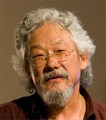“Unleash the power of nature to help make cities more resilient, livable,” says Mark Tercek, The Nature Conservancy

As the world’s population grows and as our planet increasingly urbanizes, we need to redefine the relationship between cities and nature. It is no longer enough for us to ‘protect the last great places,’ as we used to say,” wrote Mark Tercek. “Nature can help cities solve some major environmental, social and financial challenges. We don’t just need to preserve nature — we need to create more of it, particularly in cities, so people can benefit from its healing powers.”










